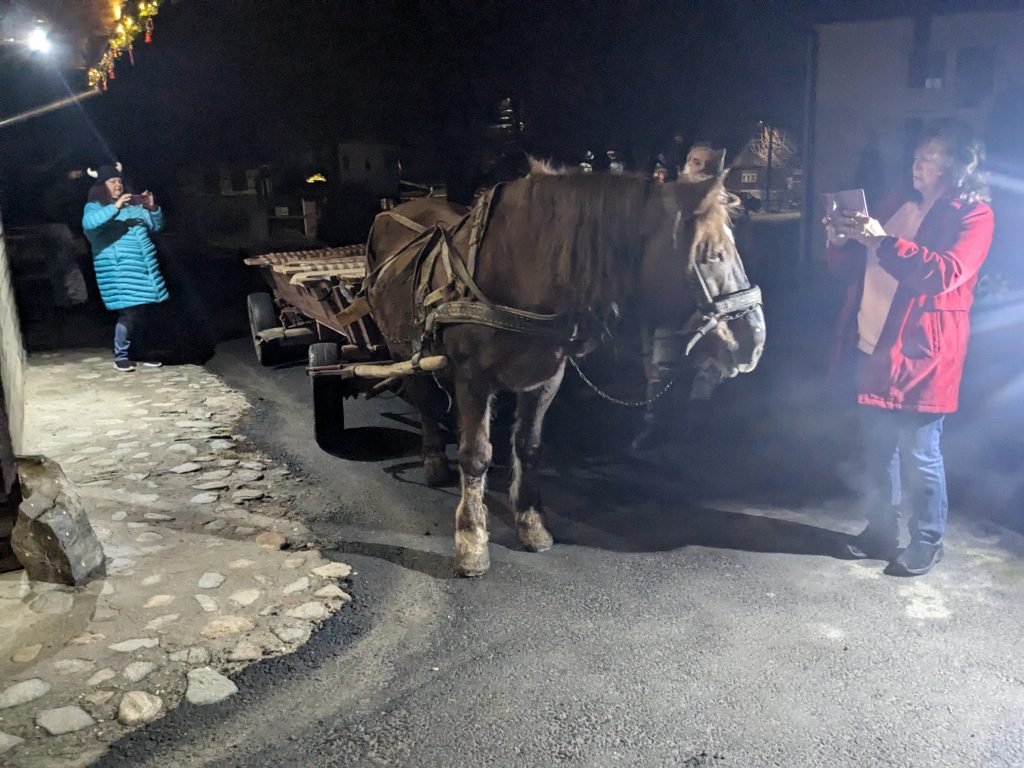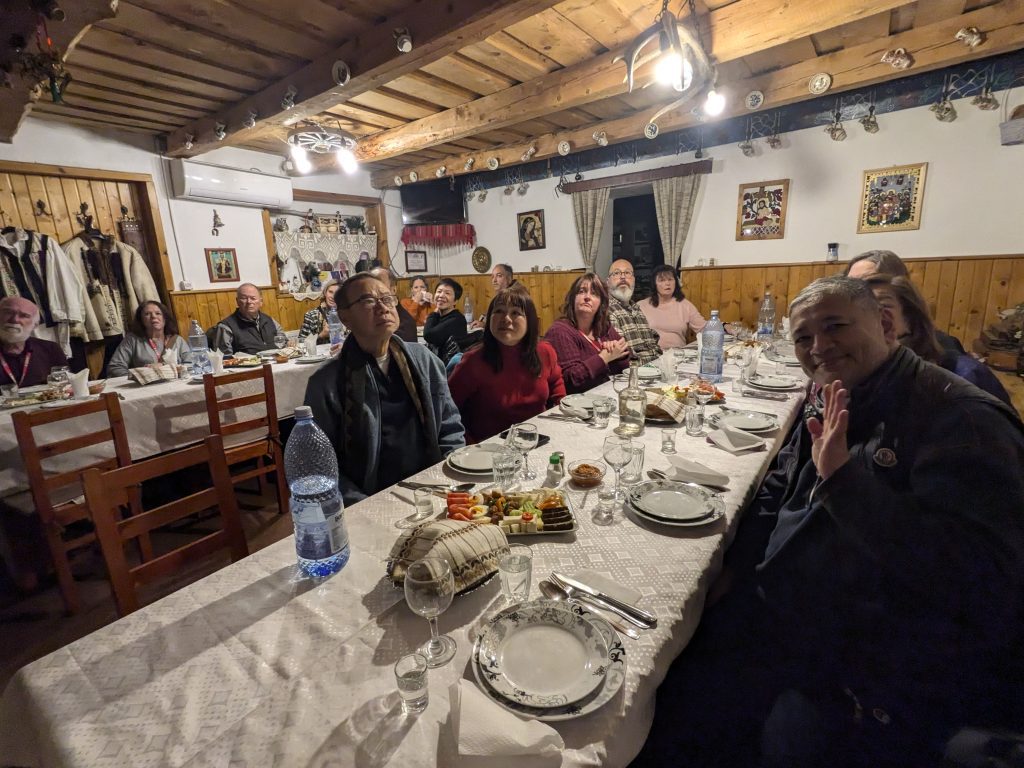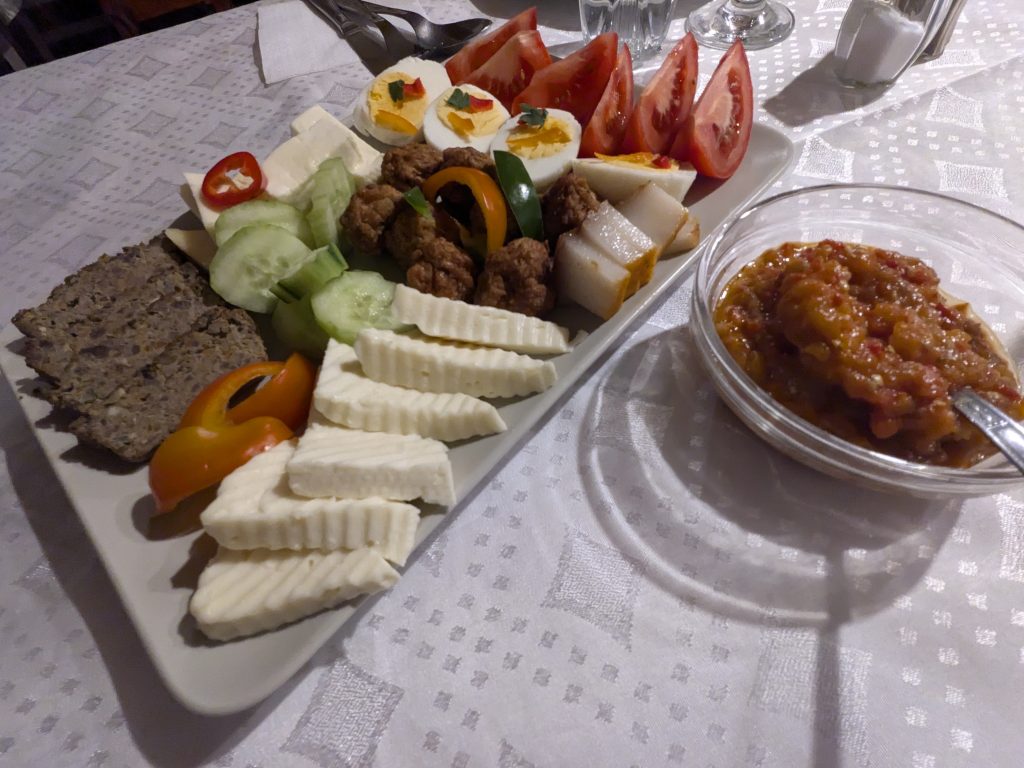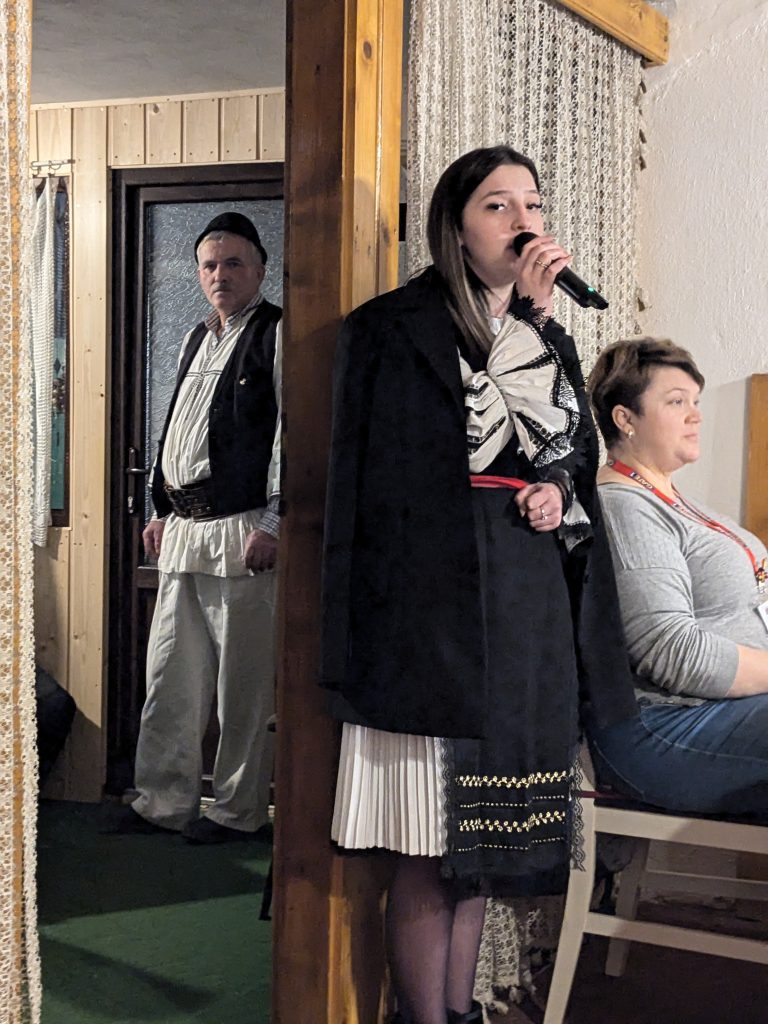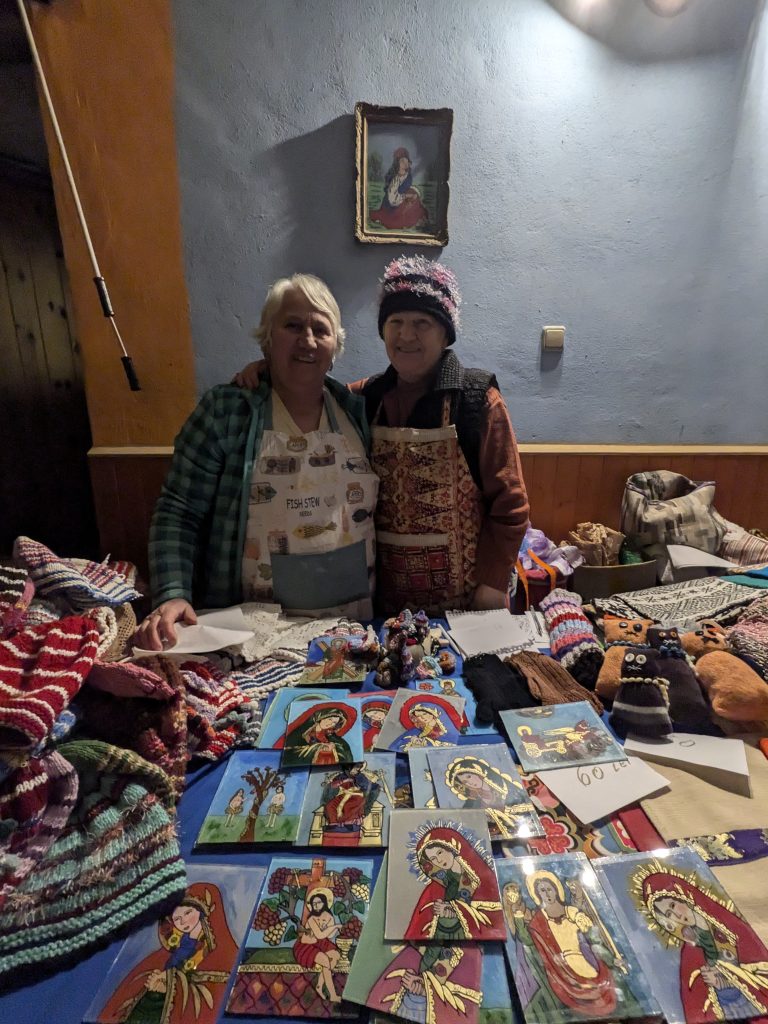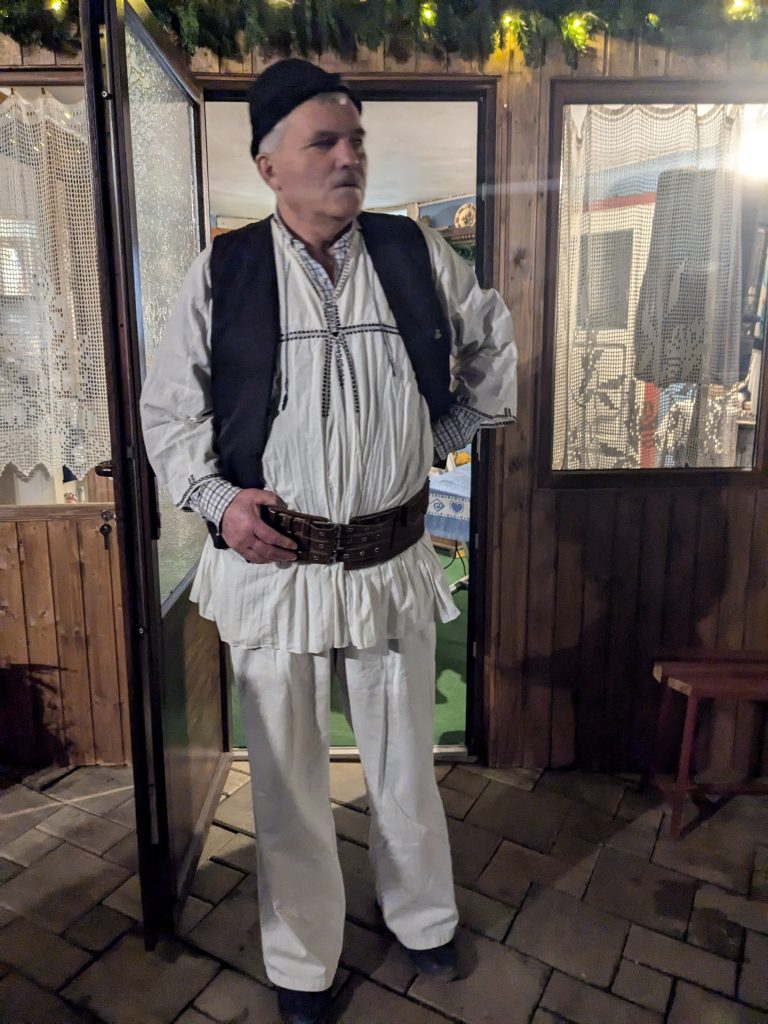Dec 9, 2024 (Sibiu)
The Bucharest leg of our trip ends as we head out on the bus to Sibiu in Transylvania. The morning traffic was very bad – it took an hour to go the first 10 km. We learned quite a bit about what life was like during the Communist times from our guide as we were driving.
She talked about government informers being embedded in the huge apartment complexes they were forced to live in. Anyone who owned a business or a nice house had their property confiscated by the government for their officials to live in. The families were then forced to live in very small accommodations where heating was not a given. Anyone who complained or disagreed with the government was arrested and many sent to death camps. The dictator wanted to increase the population of Romania so he made birth control and abortions illegal. A law was passed that every family had to have a minimum of 4 or 5 children. Childless couples were taxed. Some children were sent to orphanages because their parents could not afford to care for them. The conditions were quite bad. After the fall of the communist regime, when the conditions in the orphanages were made public, adoption was promoted as a solution. As a result, large numbers of children were adopted by foreigners in the 1990s and early 2000s
The world really didn’t hear a lot about life in Romania during this time, not until after the Revolution.
We stopped at the Cozia Monastery where our guide explained the medieval art and architecture of the church built in 1388. The church had beautiful painted frescos inside and out. I lit a few candles and gave the church some names to recite blessings in the next service.
Our destination for the evening is the town of Sibiu. We arrived in the afternoon when the sun was peeking out. A local guide took us on a walking tour of the Old Town. The city was recognized as an EU Capital of Culture in 2007 and they are very proud of the many cultural events the city hosts throughout the year. The city goes by both the Romanian name of Sibiu and its German/Saxon name of Hermannstadt. There are several plazas, the largest one hosting the markets and a skating rink in the middle. There are beautiful churches representing many faiths – Orthodox, Catholic, Lutheran and Jewish. The city retains many of its medieval defense walls including 39 towers that surround the old city. Being a Monday, the art museum and history museum were both closed. I found a little restaurant tucked in a basement cave. The food was plentiful and very cheap. I had sautéed mushrooms and a bean soup.
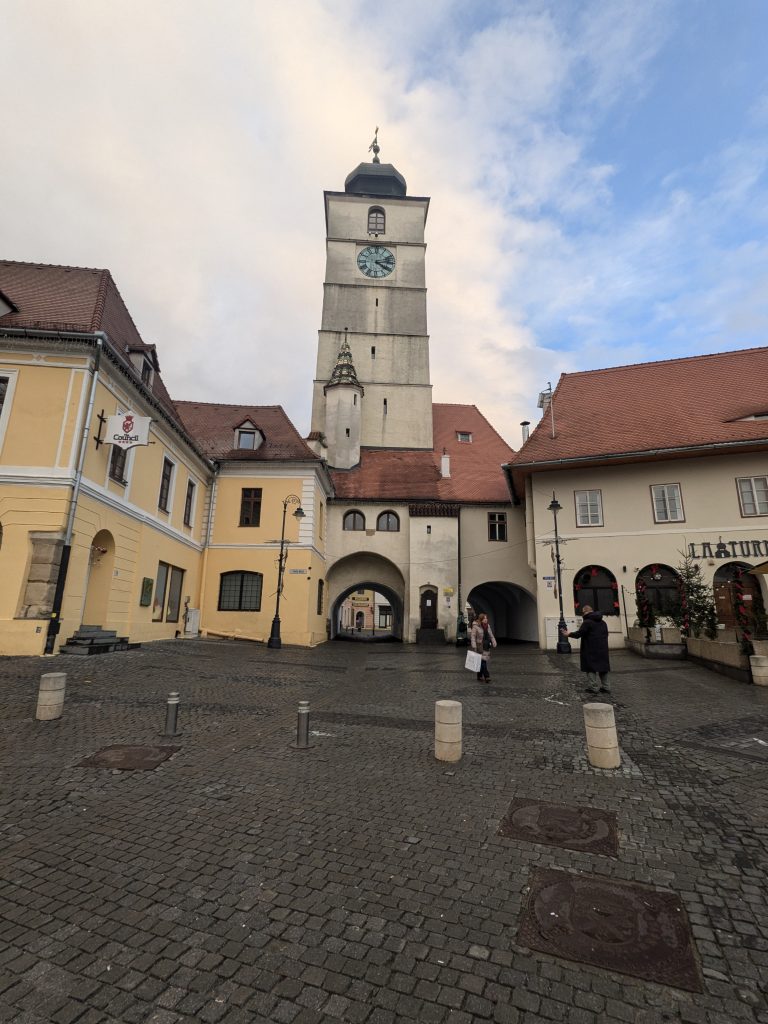
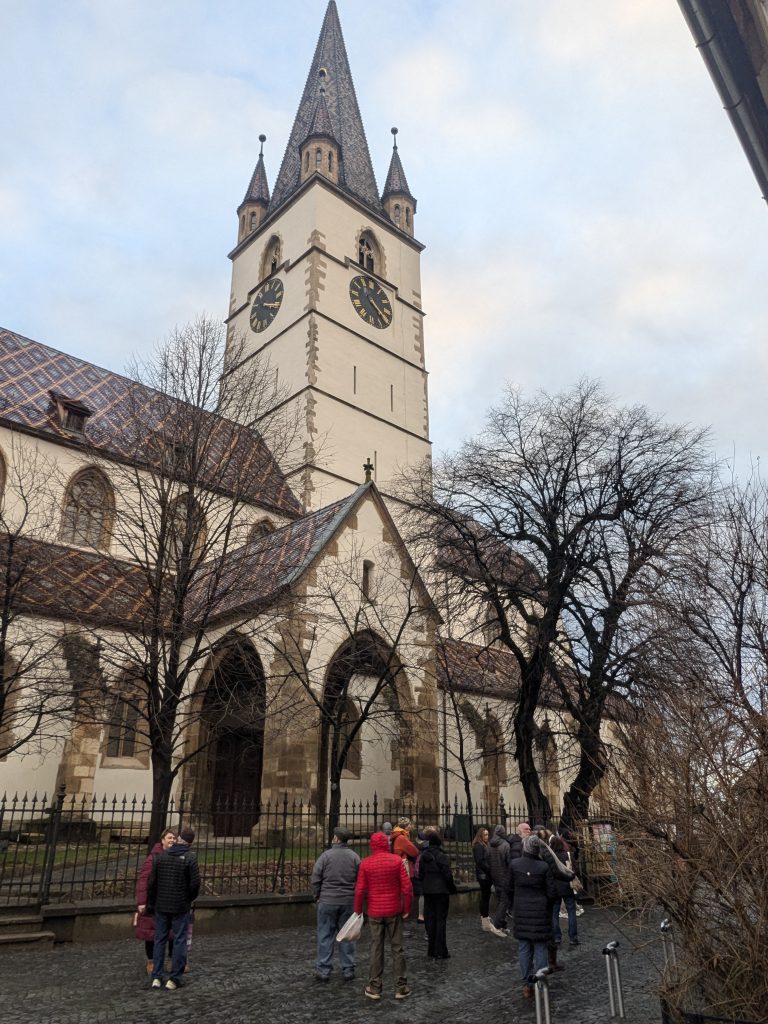
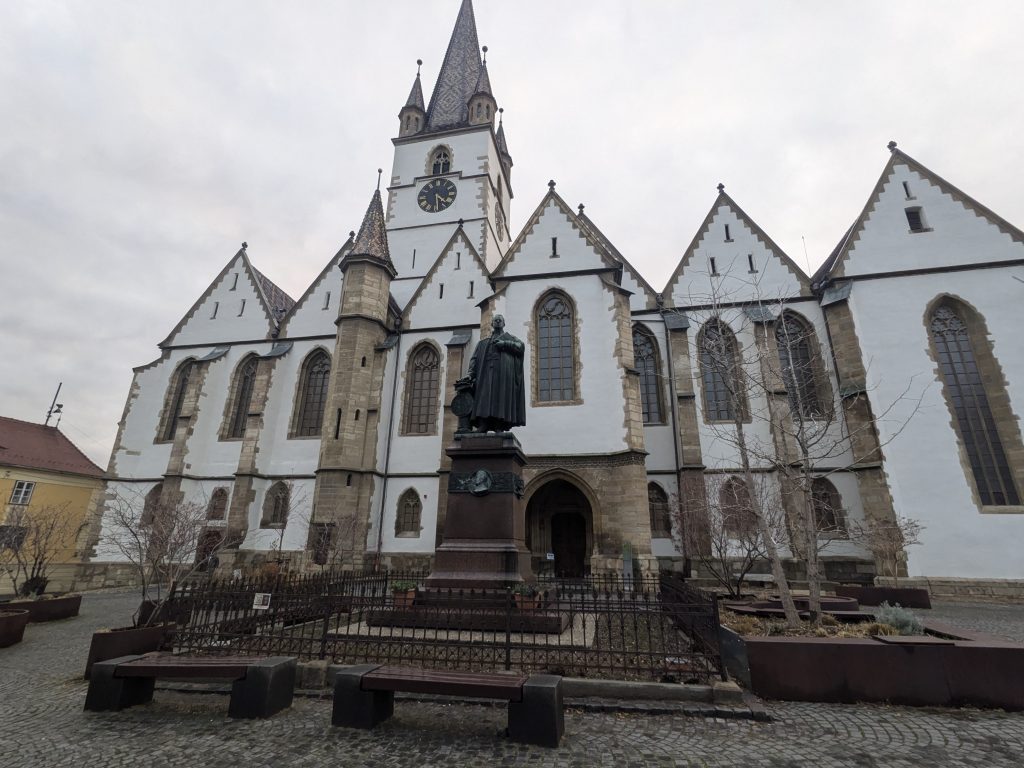
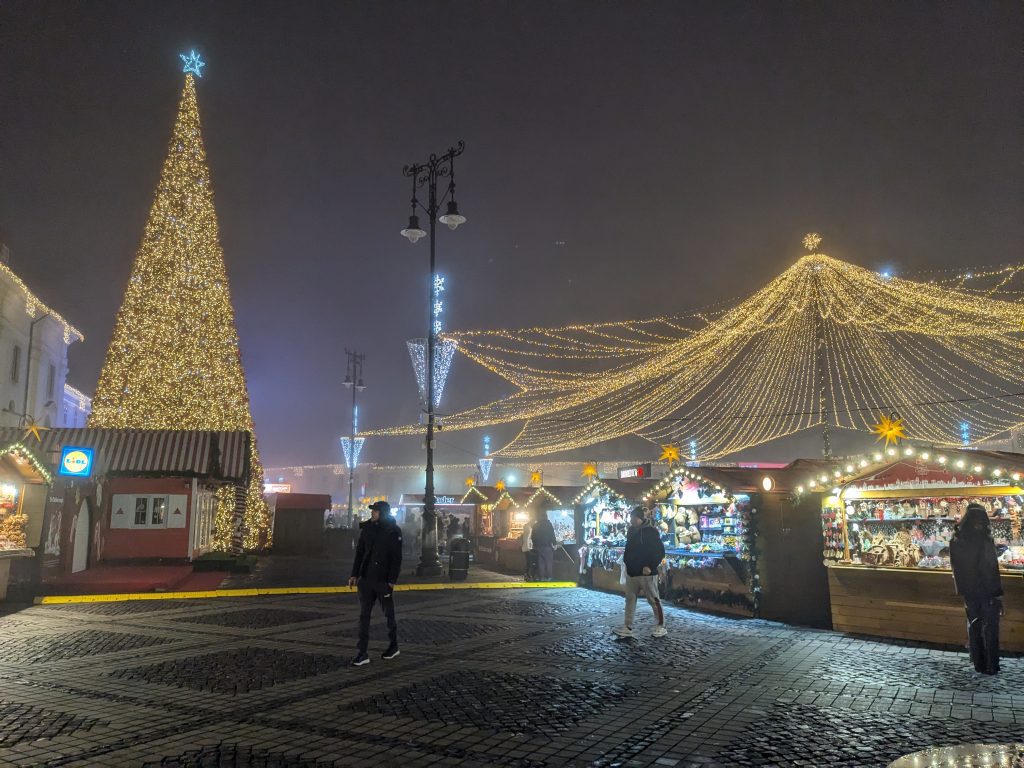
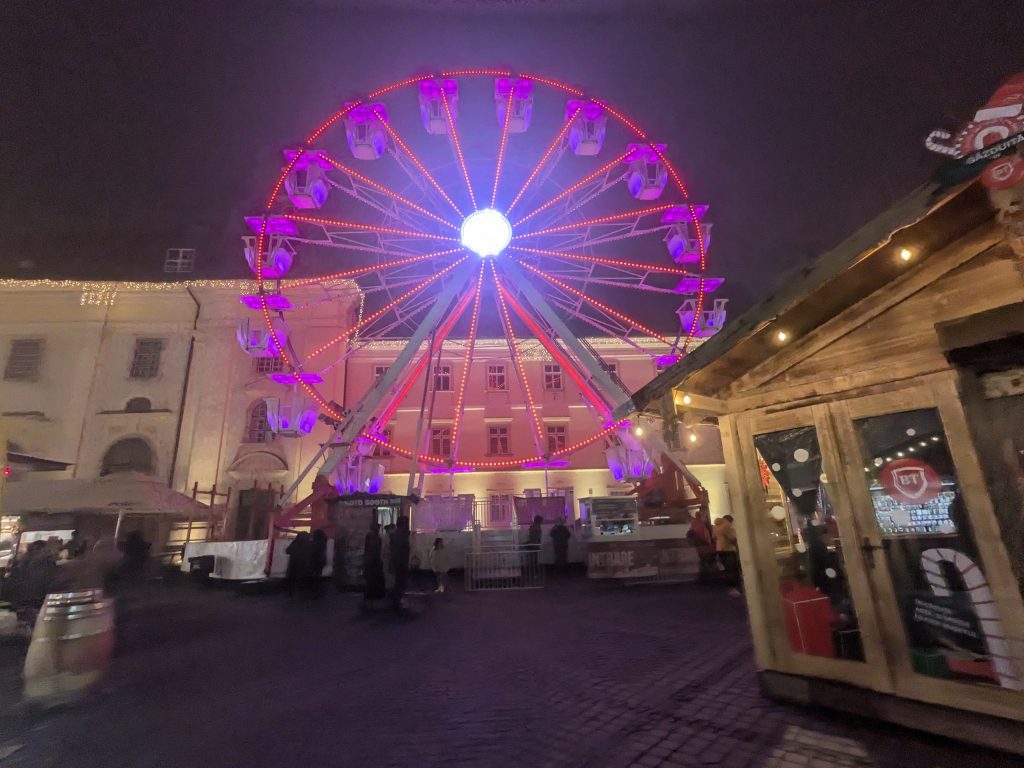
Dinner was provided by the tour – a private dinner at the hotel which was decent. We had free time to visit the markets – I took a walk around but wasn’t impressed.
A few random impressions of Romania so far:
Every hotel has CNN and BBC news – and they are actually presenting international news like in the old days. No political rants. The big news is the fall of Assad’s regime in Syria as the rebel groups take over the country. The food so far is decent, but not gourmet. The weather is typical Northern European winter – cold, rainy, grey. Probably better to come in the spring or fall. Food is inexpensive in markets and restaurants, though Bucharest was considerably more than the small towns.
Dec 10, 2024 – Rasinari
Today we took a bus excursion from Sibiu with a local guide. Our main destination was the lovely village of Rasinari. Our guide Luminitsa was dressed in traditional black and white attire. Rasinari is the name of the region as well as the village. It is located in the foothills of the Cindrel Mountain. The two villages have a population of about 5000 people. Sheep is still a major livelihood – used for their wool and milk but not for their meat.
The town has two churches – one is Greco-Catholic and the other is Orthodox which we visited. The community has maintained strong Christian faith and many old traditions, despite 50 years of communism.
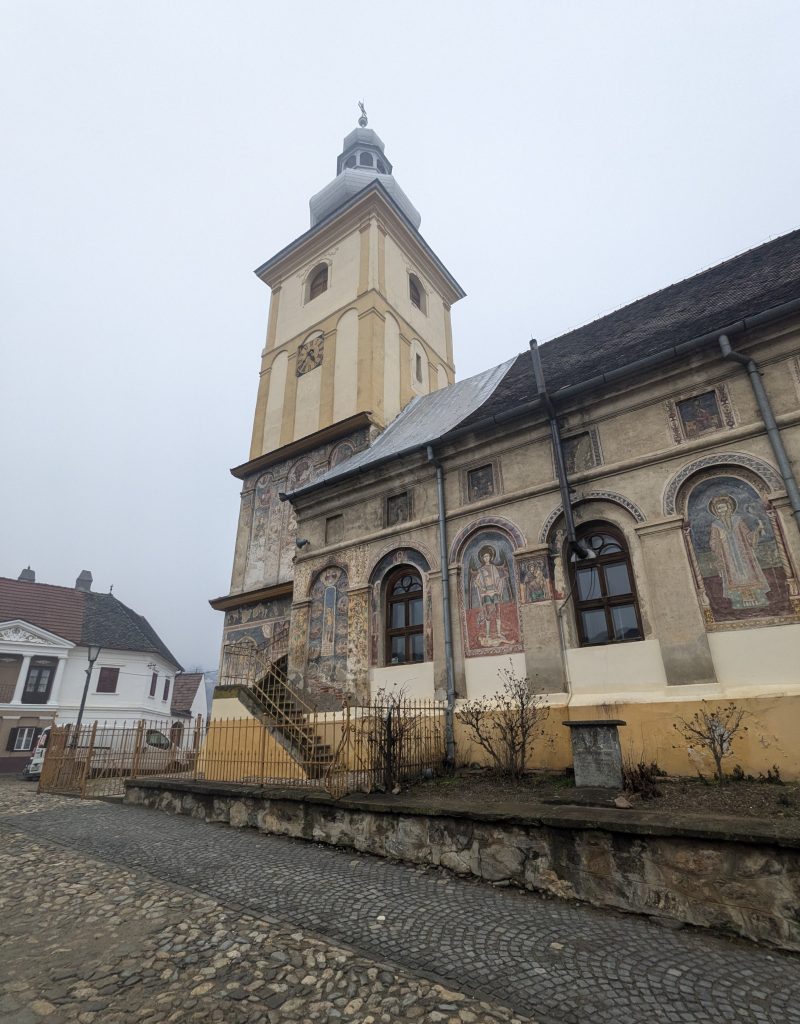
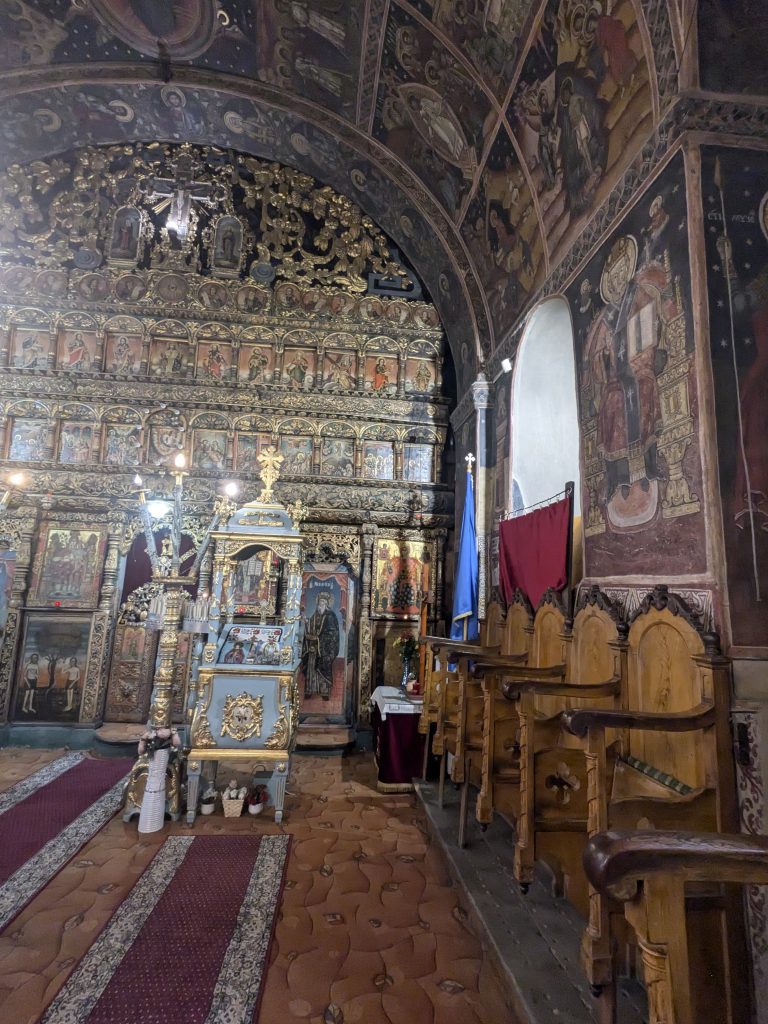
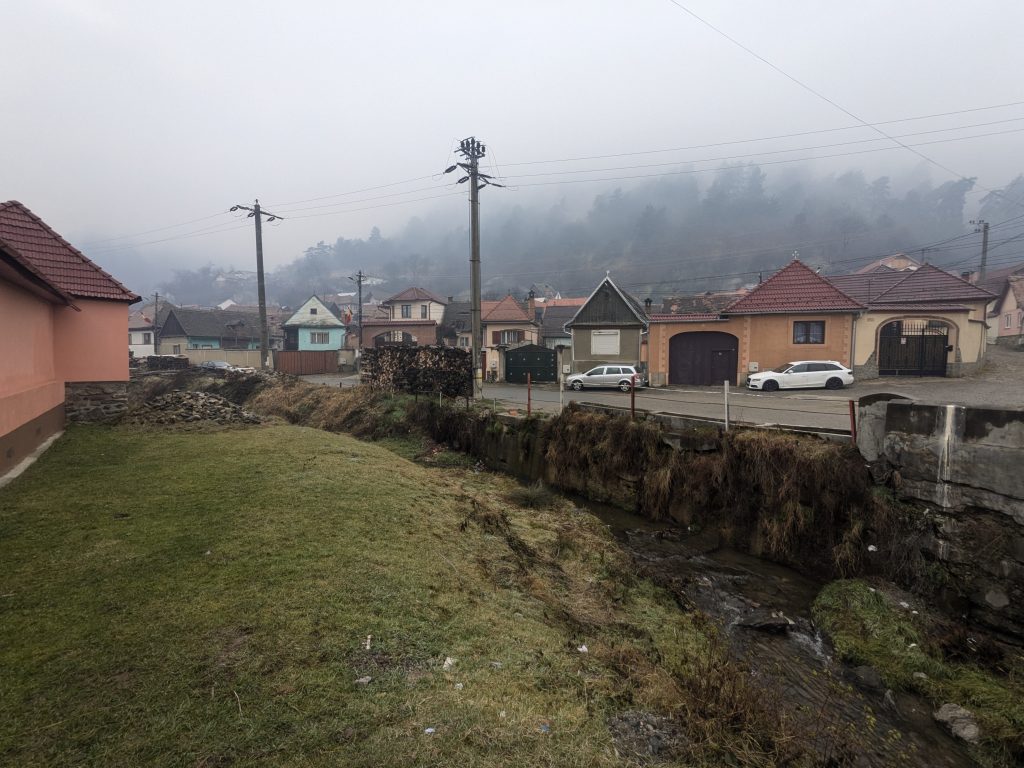
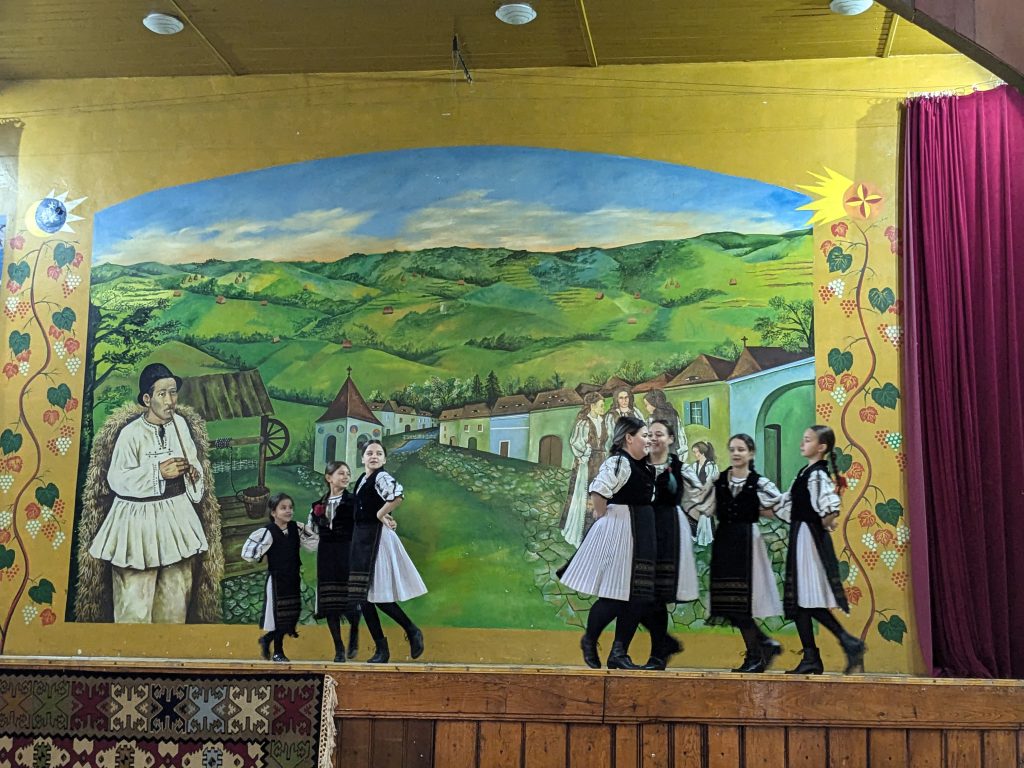
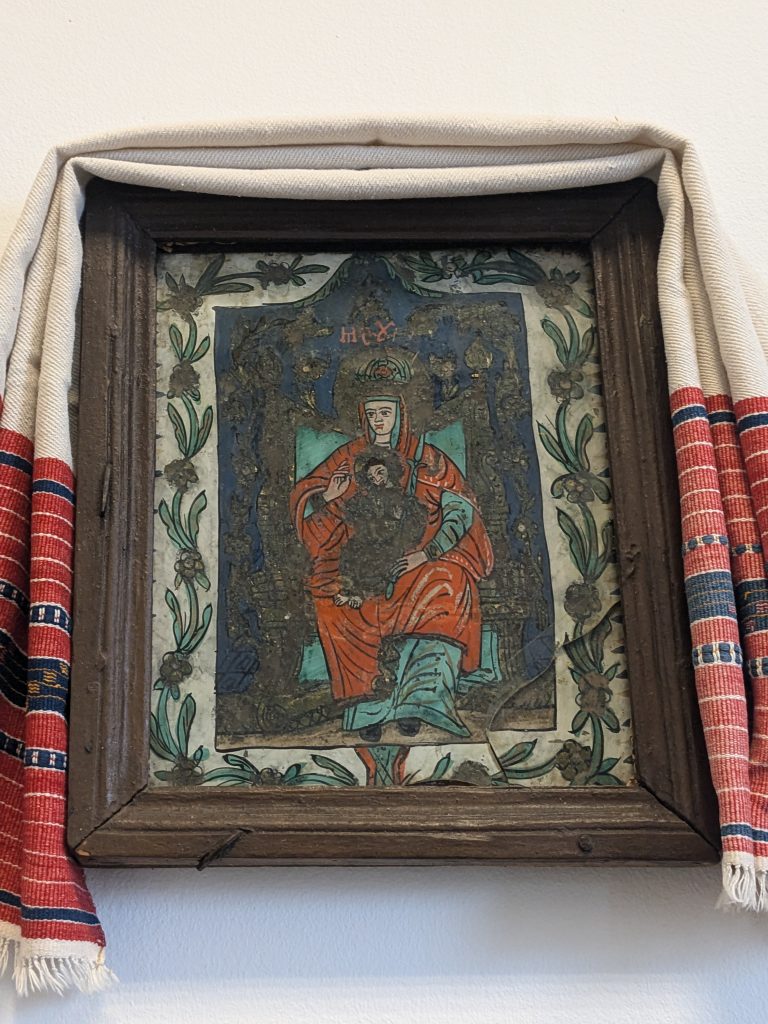
Cultural highlights of the village include its Traditional Folk-Dance Group – their children’s group performed for us in the village hall. Next door is the Ethnographic Village Museum – which we were only allowed to see one room. Other highlights are St. Paraschiva Church and the poet Octavian Goga’s family house.
Because the village has maintained its cultural traditions and architecture, it was recognized as a Best Tourism Village by UN World Tourism Organization in 2022. According to the UN website, the goal of this initiative is “to recognize the villages which are an outstanding example of a rural tourism destination with recognized cultural and natural assets that preserve and promote the rural and community based values, products and lifestyle. And to recognize the villages which have a clear commitment to sustainability in all its aspects – economic, social and environmental – in its development of tourism as one of the drivers of rural development and community well-being.” This list of villages would make an interesting bucket list of places to visit. https://tourism-villages.unwto.org/en/villages/ Only 2 villages in Greece are listed – Anogeia and Soufli.
Because of this award, the village has received funding to run natural gas lines. There was much construction visible when we visited. However each home has to pay 5000 euros to get natural gas installed in their homes. Because of this barrier, there were many many piles of wood all around the village and smoke pouring out of the chimneys. There are many hiking trails that start in this village and cultural festivals throughout the year.
Our lunch was provided by Gate1 at a historic inn where we were served traditional Romanian dishes. The inn is located in a park that contains many traditional buildings with walking paths along a lake. It would be a lovely destination on a pretty day. We had free time in the afternoon back in Sibiu. I went back to wander the old town. I visited Orthodox cathedral and climbed tower at St. Mary’s Lutheran church.
The other place I visited was St. Mary’s Lutheran Church. The Lutheran Cathedral of Saint Mary is a famous Gothic-style church in Sibiu, Transylvania. It has a massive 73.34 m high steeple which is a landmark of the city and four turrets situated on top of the steeple said to have been a sign to let foreigners know that the town had the right to sentence to death. The Cathedral was built in the 14th century, originally the Catholic parish church of St. Mary. It became a Lutheran Parish during the Reformation in the 16th century, when all the Transylvanian Saxons were converted to Protestantism. There were important people buried in the church until 1796. There elaborate tombstones are displayed on the interior walls of the church. My main objective for visiting this church was to climb the bell tower for views of the city. It was about 8 stories, 200 steps. I took it slowly and it was worth the climb.
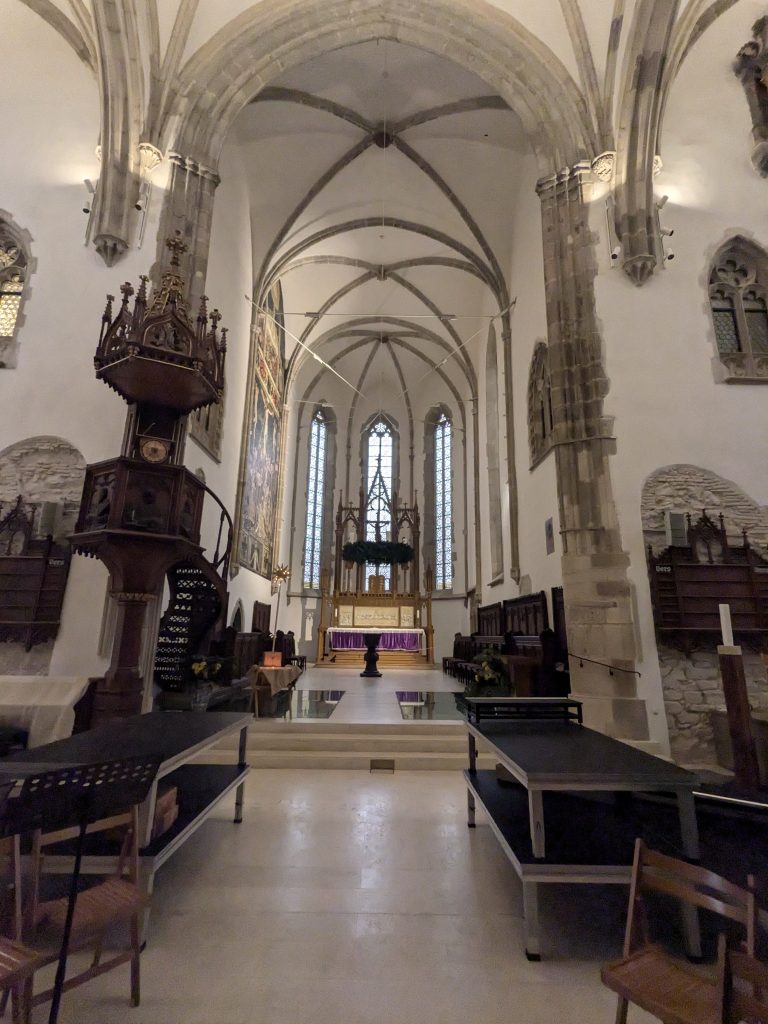
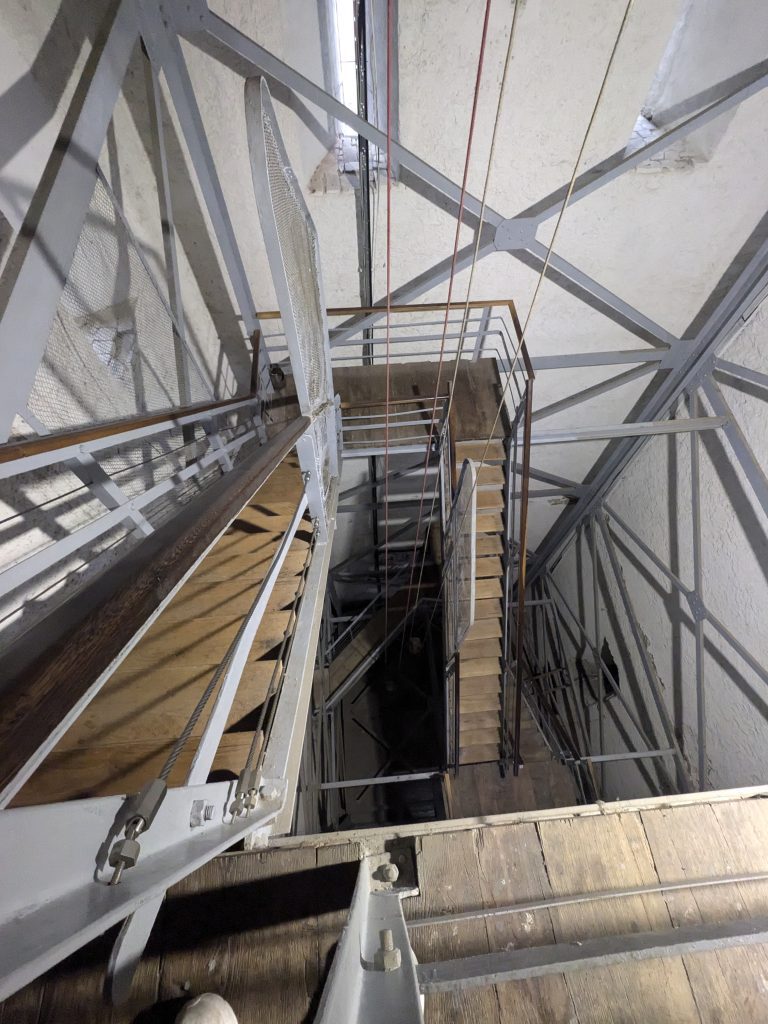
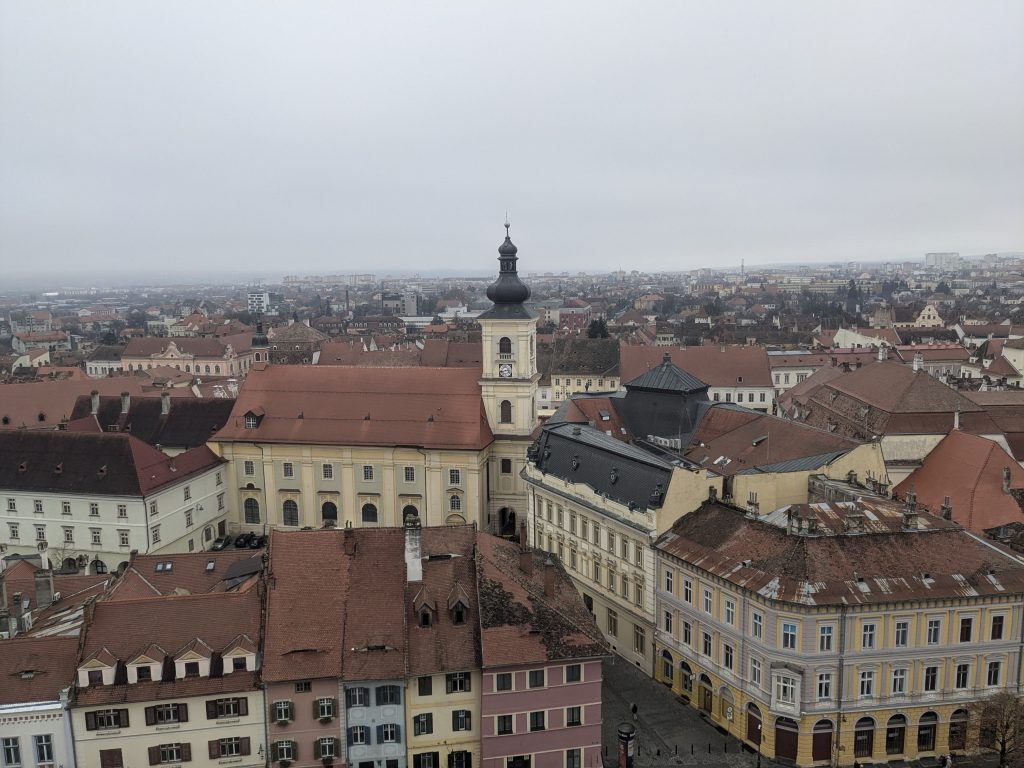
The Holy Trinity Cathedral, Sibiu is the seat of the Romanian Orthodox Archbishop of Sibiu and Metropolitan of Transylvania. It was built in the style of a Byzantine basilica, inspired by Hagia Sophia in Istanbul, with the main spires influenced by Transylvanian church architecture and Baroque elements. I didn’t have to read about this cathedral to see the resemblance to the Hagia Sophia. It is a massive ornate church, quite big for this small community. Construction started in 1902. Next to the church is book and gift store. I bought a beautiful icon of the Virgin Mary for my home.
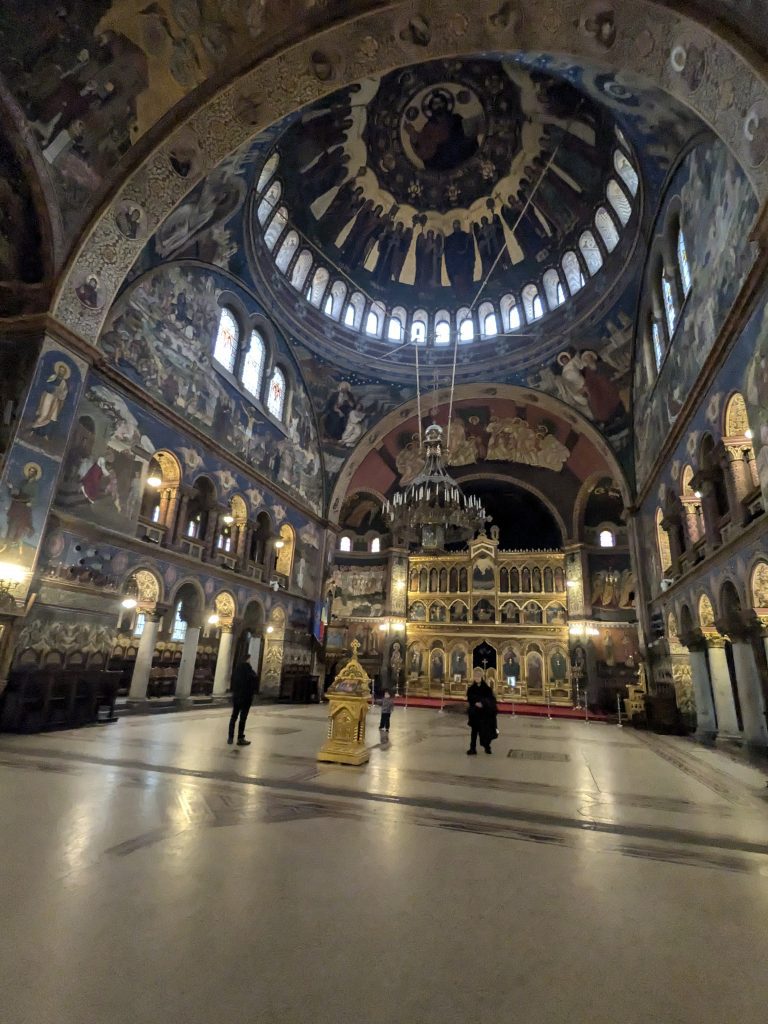
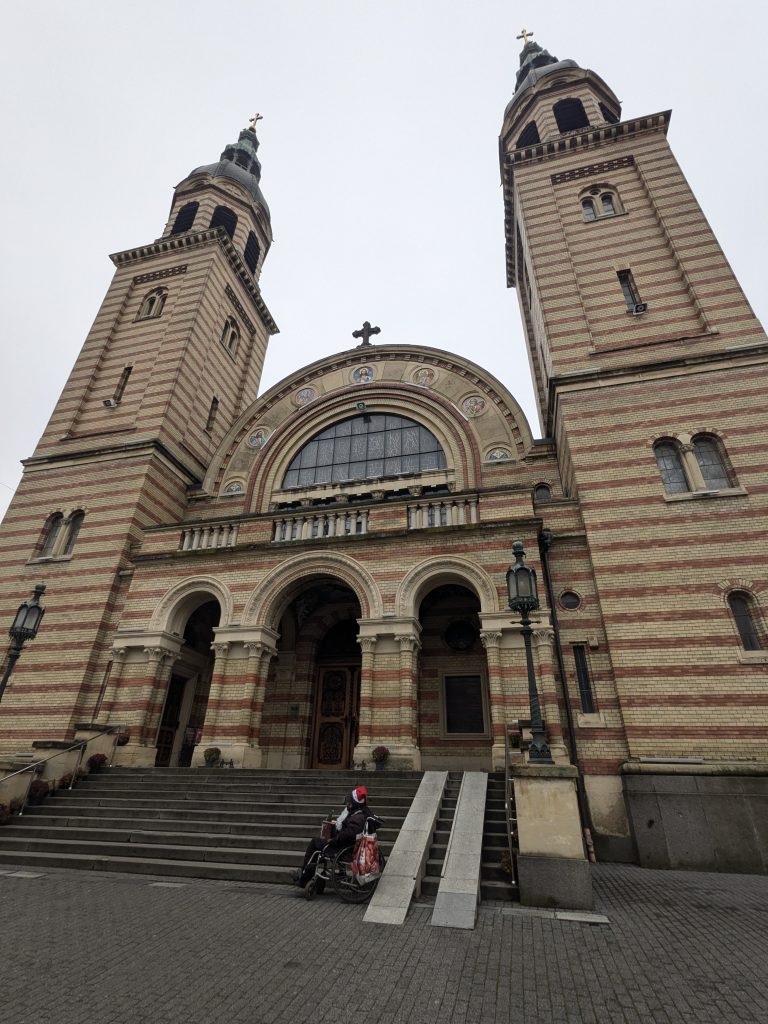
I had signed up for Gate1’s optional tour in the evening which was dinner at the farm house of a local family in the tiny village of Sibiel. When we arrived in the village after dark, we were greeted by local men who gave us a ride in a cart pulled by horses. It sounds a little hokey, but actually was quite charming. We were served a dinner of local specialties including chicken soup, stuffed cabbage, local cheeses and wine. After dinner we had a chance to buy handmade items from the farmhouse wife – painted icons on glass and knitted goods. I got a St. Nicolai icon for grandson Niko and a knitted cap for both of us. Next door to the farmhouse is a museum of glass painted icons but it was closed that night. I would have really enjoyed seeing that collection of more than 600 pieces collected by a 20th century priest (Zosim Oancea) during the height of Communism.
